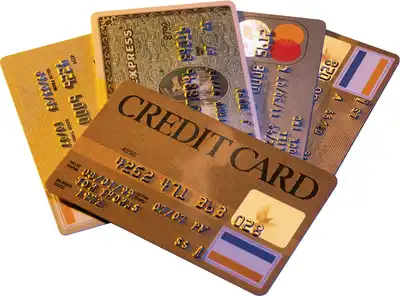Moving money between banks is not as straightforward as it may appear, especially when using credit cards for payment. For someone to use a credit card for a purchase, the seller must have a prior arrangement with the credit card issuer to accept payments through that card. If such an arrangement doesn’t exist, the desired purchase cannot be made using that specific credit card.
This situation can arise when a person attempts to use a particular credit card with a merchant who has not set up the necessary means to accept payments through that card. Setting up individual relationships with each credit card offered by various banks would be a cumbersome process for merchants, given the multitude of different credit cards available. This issue becomes even more complicated when the credit card is issued by a bank in another country, as international interbank payments lack preexisting arrangements and can be particularly challenging.
To transfer money from one bank to another, the banks generally do not deal with each other directly, with some exceptions varying by country. In many countries, options for bank-to-bank transfers are limited, and wire transfers are often used, despite being expensive and taking several days for confirmation. Such delays are impractical for point-of-sale purchases, where immediate payment confirmation is necessary for the merchant to release the purchased goods or services to the buyer.
The Role of Networks With Credit Card Payments
To facilitate non-cash point-of-sale payments, the involvement of third-party processors is both practical and necessary. These processors set up networks that enable seamless fund transfers between the buyer and the merchant’s bank, regardless of the card issuer’s bank or the country of issuance.

In the early days of major credit cards, banks used to issue their own independent cards. For example, the BankAmericard was initially exclusive to Bank of America. As the popularity of the BankAmericard grew, more merchants started accepting it. Other banks, either wanting to participate in the success of the card or lacking the means to initiate similar projects, joined forces with Bank of America. Over time, this collaboration evolved into what is now known as Visa, the world’s most popular credit card payment processor.
Master Charge, later known as MasterCard, emerged as an alternative to Visa a few years after its success. Many banks joined this effort, and MasterCard became the second-largest credit card payment processor worldwide. American Express, which has been around since the early days of major credit cards, holds the third position globally. While American Express credit cards may not be as widely accepted as Visa or MasterCard, they still maintain a significant presence in the market.
The primary focus of these payment networks is acceptance rate. Having a credit card that can be used where you want to use it is crucial for cardholders. This is especially important for credit cards, as the ability to pay with cash may not always be an alternative, and the utility of a credit card depends on its ease of use and acceptance.
While merchant-issued cards are accepted by the issuing merchant only, major credit cards offer the advantage of widespread acceptance. Their global acceptance allows travelers to make purchases in other countries where their debit cards may not work, eliminating the need to carry foreign currency. Major credit cards have become incredibly convenient, enabling users to make purchases virtually anywhere, including in the online world.
How Credit Card Payments Work
Credit card payments are not instantaneous but involve a promise to pay for the purchase. To ensure that the cardholder has the means to pay, the authorization process is necessary. In the past, this involved placing a phone call to the credit card company for approval. Nowadays, it’s done electronically, checking the cardholder’s credit limit and security issues.
Credit cards are revolving lines of credit, and the credit limit determines whether they are approved or not. Once a purchase is authorized, it is added to the pending list and counts against the available credit until it is processed. Credit card payments, like debit transactions and bank transactions, are processed in bulk at the end of each business day for efficiency.
The credit card company arranges to pay the merchant’s bank, but a processing fee is added, which varies by credit card and merchant. These fees are higher than for debit transactions, but merchants often accept them due to the widespread use of credit cards.
Cardholders need to pay back the borrowed funds, and if done within the grace period, no interest is charged. Paying off the previous statement balance in full during the current statement period avoids interest charges. Credit cards are a convenient way to make purchases, especially with reward programs that offer benefits to responsible users. By handling credit cards correctly, cardholders can borrow money for a short time and even earn rewards for doing so.




